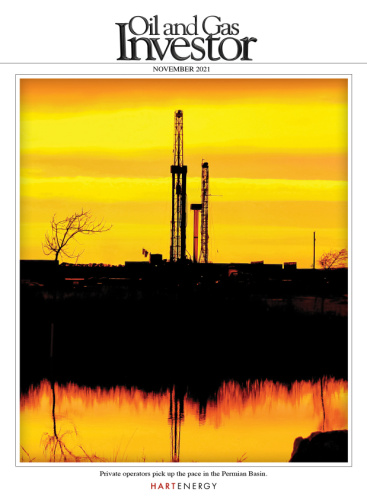Presented by:
Musings from the field—meaning phone calls from the office, not the actual oil field of course.
First, the recent A&D Strategies and Opportunities Conference in Dallas was a salute to E&P capital discipline, particularly for oil makers. It should be noted that each congratulatory declaration seemed wrapped in a certain subtext: Step away from the drill, and keep your hands up.
How fleeting will E&P restraint be? Which of the large public companies will go rogue as wells in every basin return to viability, meaning able to generate 100% returns, A&D professionals mused. Trying to untangle such riddles is about as easy as defusing a bomb using only Ikea-style instructions. Finding the red wire is not so easy in black and white.
Simultaneously, external pressures are also surfacing. Service providers are ratcheting up prices, which will impact their E&P customers’ bottom lines. The Dallas Fed recently reported that its index for E&P LOEs increased from -5.9 to 23.4 in the second quarter.
After hearing seemingly infinite choruses of “Scale will do it!” sung to the tune of Handel’s “Messiah,” possibly the time is coming for E&Ps to sing along.
But then there’s the market, which remains a game of nerves. Like submarine commanders, E&P management no doubt wants to turn the screws to flank speed. But they’re navigating the mined waters of investors who want to be paid and protected from another, inevitable sinking event.
Thus the contradictions of a strong commodity tape are revealed. The dilemma comes amidst a backdrop not of a slight uptick in commodity prices, but tall leaps in a single bound. The most remarkable examples have been natural gas spot prices in Asia and Europe that have spiked to the equivalent of $320/boe, according to Columbia University’s School of International and Public Affairs.
And it could ultimately prove to be small potatoes as winter comes for an ill-prepared world. Already, China, India, the U.K., France and other large, developed countries are scrambling for fuels.
ALSO IN THIS ISSUE:
A&D Roundtable: Return of the Upside for E&P Companies

For natural gas, this may well be a pivotal moment in its role as the so-called bridge fuel of the future, according to Anne-Sophie Corbeau, a global research scholar at Columbia’s International and Public Affairs.
Volatility in prices has some “arguing in favor of accelerating the transition away from fossil fuels” and those who still see fossil fuels are needed.
Recall that for years, the most militant environmentalists have waged campaigns— keep it in the ground and divestment—that seem hilariously shortsighted. For every natural gas company unable to produce a Mcf of natural gas, there’s a truck of coal waiting to take its place. That’s not good for the environment.
With a religious zeal, the condemnation of oil and gas and the lifting of renewables has the perhaps now obvious drawback of being unable to supply energy to everyone, particularly in less developed nations.
“Citizens in developed countries are unlikely to give up on the comfort of having electricity or gas readily available, while there are still significant number of citizens facing energy poverty,” Corbeau said.
No doubt fossil fuel haters will rail against the imaginary windfall profits that natural gas companies are reaping. But as Haynes and Boone recently observed, many producers have locked-in hedges that were the breath of life in 2020 but are now limiters to cashing in on swelling second-half 2021 prices.
Wildly inflated or volatile prices, “a sustained crises that batters consumers may have critical repercussions for the fuel longer term.”
What’s clear is that oil and natural transactions will continue, especially as some participants are shut out of buying because of the stigma that Europe in particular has attached to oil and gas.
As Daniel Zwirn, CEO of Arena Investors LP, said during a web discussion hosted by the Financial Times, people are beginning to see the “clash between goals and reality.”
In Germany and Belgium, some industries have been forced to cease or reduce operations because of high commodity prices, while China and India also face a power crunch that may force the closure of factories.
“As folks in Europe are realizing right now, it gets cold outside without oil and gas,” Zwirn observed. “It’s going to be present in the market, along with coal, for the next 30 years because there’s no other way for it to be. So, you are going to continue to see transactions in those spaces that do make economic sense, particularly all the more so because they may be out of bounds for certain participants.”
Recommended Reading
SLB’s ChampionX Acquisition Key to Production Recovery Market
2024-04-19 - During a quarterly earnings call, SLB CEO Olivier Le Peuch highlighted the production recovery market as a key part of the company’s growth strategy.
PHX Minerals’ Borrowing Base Reaffirmed
2024-04-19 - PHX Minerals said the company’s credit facility was extended through Sept. 1, 2028.
BP Restructures, Reduces Executive Team to 10
2024-04-18 - BP said the organizational changes will reduce duplication and reporting line complexity.
Matador Resources Announces Quarterly Cash Dividend
2024-04-18 - Matador Resources’ dividend is payable on June 7 to shareholders of record by May 17.
EQT Declares Quarterly Dividend
2024-04-18 - EQT Corp.’s dividend is payable June 1 to shareholders of record by May 8.







